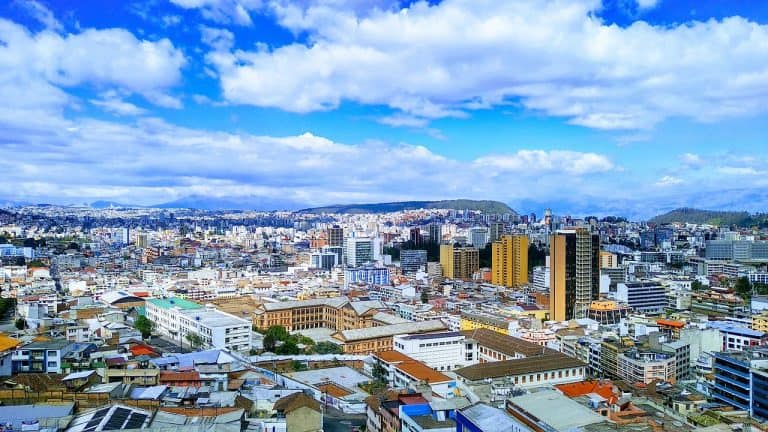When one thinks of Ecuador, images of the Galápagos Islands, lush Amazon rainforests, and majestic Andes peaks often come to mind. However, this small country in South America holds a plethora of intriguing facts beyond its picturesque landscapes. Herein, we delve deeply into the elements of Ecuador’s volcanoes, wildlife, and the enigmatic secrets of the Equator, offering a comprehensive exploration of this remarkable nation.
1. The Volatile Volcanoes of Ecuador
Ecuador is home to approximately 70 volcanoes, a staggering figure considering its size. These mighty natural formations are not merely geographical features; they are integral parts of Ecuador’s culture, folklore, and even its economy. Mount Chimborazo, which towers at 6,263 meters, is the tallest mountain in Ecuador. Interestingly, it is also the closest point on Earth to the sun, due to the Earth’s equatorial bulge. This distinction fascinates many, as it challenges the notion that elevation corresponds directly to proximity to the sun.
Moreover, Ecuador is part of the Pacific Ring of Fire, a region characterized by high volcanic and seismic activity. The eruption of Cotopaxi, one of the world’s most active volcanoes, has captured the imagination of locals and travelers alike. Cotopaxi last erupted in 2015, a stark reminder of the Earth’s raw power. This active nature has shaped both the landscape and the livelihoods of those living in its shadow.
2. Biodiversity Hotspot
Ecuador boasts an extraordinary array of biodiversity, thanks in large part to its varied habitats ranging from high Andean mountains to lowland rainforests. It has been designated as one of the 17 megadiverse countries in the world, meaning it hosts an astonishing number of unique species. The Yasuni National Park is a UNESCO World Biosphere Reserve, showcasing an especially rich variety of flora and fauna. Here, one can encounter creatures like the jaguar, pink river dolphin, and countless bird species, including the mythical Andean condor.
The Galápagos Islands, an archipelago off the coast, takes pride in being the laboratory of evolution. The peculiar wildlife here, such as the giant tortoises and marine iguanas, inspired Charles Darwin’s theory of natural selection. Each species is a testament to the islands’ isolation and unique evolutionary paths. Notably, in the Galápagos, one can see species that inhabit specific islands, reinforcing the idea of adaptive radiation, where species evolve distinct characteristics based on their environment.
3. The Equatorial Enigma
La línea ecuatorial (the equatorial line) runs right through Ecuador, offering a unique opportunity to experience this geographic marvel. However, what lies beneath this seemingly simple fact is a wealth of scientific curiosity and local lore. Visitors often flock to the Intiñan Solar Museum near Quito, where they can participate in various equilibrium experiments that showcase the peculiar behaviors of water drainage, which differ on either side of the Equator. This has often been a point of confusion and wonder for many.
Interestingly, the equatorial region also experiences a phenomenon called the Coriolis effect, which affects weather patterns. This effect, while not easily observable, contributes to the intense downpours and remarkable biodiversity of the Amazon rainforest. The constant, balanced sunlight at the Equator affords Ecuador unique weather patterns, enabling rich ecosystems to flourish.
4. Remarkable Indigenous Cultures
Ecuador’s cultural tapestry is woven with threads from various indigenous groups, each contributing unique traditions, languages, and lifestyles. The Quechua, Shuar, and Huaorani peoples, among others, maintain deep-seated beliefs and practices that have stood the test of time. Their relationship with the land is intrinsic, emphasizing a sustainable lifestyle that honors nature. Rituals and celebrations play a crucial role in preserving these ancient traditions, with festivals like Inti Raymi (Festival of the Sun) illuminating the rich cultural heritage.
While exploring these indigenous communities, one often encounters the concept of “sumak kawsay,” or “good living,” which encapsulates a worldview that prioritizes harmony among all beings and the environment. This philosophy is a compelling commentary on the modern world’s relentless pace and its often detrimental effect on social and ecological balance.
5. Culinary Delights of Ecuador
The gastronomic landscape of Ecuador is equally as rich and diverse as its natural surroundings. Ecuadorian cuisine reflects a blend of indigenous ingredients with Spanish influences. The primary staples include potatoes, corn, and an array of tropical fruits. A quintessential dish is ceviche, made from fresh fish marinated in citrus juices, often accompanied by a refreshing side of plantains.
Local markets offer an array of vibrant produce, including unique items such as the “granadilla,” a sweet fruit with a gelatinous interior, and “ají,” a fiery chili sauce that can accompany many meals. The modernization of Ecuadorian cuisine has led to innovative fusion restaurants that still pay homage to traditional flavors, showcasing the dynamic culinary evolution of the nation.
6. A Vibrant Political History
The political landscape of Ecuador is marked by its tumultuous history, with numerous coups and changes of government throughout the 20th century. This historical backdrop has helped cultivate a politically aware populace, passionate about autonomy and democracy. The legacy of varied political movements often correlates with the broader struggles of Latin America, echoing the themes of resistance and resilience against external pressures.
The recent history of Ecuadorian politics is characterized by a dynamic interplay between indigenous movements and the government, advocating for land rights, environmental protection, and social justice. This continues to be a significant aspect of contemporary Ecuadorian identities and collective social consciousness.
In summary, Ecuador’s charm lies not just in its breathtaking scenery but in the intricate interplay of natural wonders, cultural richness, and community spirit. This country stands as a microcosm of the world’s wonders, inviting exploration and admiration. Whether it’s the rumbling of volcanoes, the haunting call of exotic wildlife, or the simple straightness of the Equator, Ecuador presents a captivating narrative waiting to be uncovered.







